There are many aspects to consider when framing large artworks. This can range from the type of glass to the type of mount. Will it float in the frame? Which colour will compliment and brighten the artwork? Which frame width looks best for the wall? These are all questions that our knowledgeable team can help you answer, as over the years we have assisted in the display and installation of many types of art – from grand baroque paintings to contemporary prints and unique objects.
 Above: a member of our team measuring a large artwork in our London studio
Above: a member of our team measuring a large artwork in our London studio
Many artworks have their own needs for ongoing preservation, which you can find out more about in one of our many articles on artistic mediums and genres – this includes the recommended temperature, lighting and humidity for each type of material to keep them safe. However, the first and most important part of protecting your artwork is finding the correct frame with conservation methods – cheaply made commercial frames often harbour high PH levels which lead to acidic decay and yellowing discolouration, whilst our specialist services ensure that these harmful chemicals are avoided.
 Above: our frame conservator attaching new fixtures to an antique frame
Above: our frame conservator attaching new fixtures to an antique frame
This article will guide you through the aspects of framing large artworks and what to consider when arranging safe installation.
Frame dimensions and bespoke sizing
Large artworks are often heavy, with further weight being added due to the size of the glazing or frame moulding itself. In these cases we recommend a wooden frame with a sufficient width to hold the glazing and backing boards securely in place, whilst still in-keeping with the aesthetics of the artwork. We would always recommend that the width of the frame grows with the size of the artwork, to ensure it is as strong as possible.
 Above: a selection of new frames in different styles with wood and polcore materials
Above: a selection of new frames in different styles with wood and polcore materials
Most frame mouldings (that is the outermost frame) are supplied in 3 metre lengths, which depending on the width can be cut to size without joins for large frames. On an artwork or specialist item which surpasses 3 metres, our technicians can create a frame which may have more joins than the usual four corners. This is easy to hide on a large baroque frame, or something with decorative features, as the ornamental elements can be placed over any joins in the wood. This is a challenge for modern or contemporary frames with a smooth finish, but it is not impossible to leave a clean and well finished result after careful craftsmanship.
Metal frames, such as those formed in aluminium, are more generally available in 4 metre lengths, making this modern finish something to consider if you’re looking for a size within this measurement with no more than the four standard corner joins.
 Above: a large New York cityscape framed with an aluminium moulding
Above: a large New York cityscape framed with an aluminium moulding
Framing a heavy artwork or specialist item
As the weight of an artwork or item can be significantly higher than that of a standard piece, it is important to first understand the movement of the piece and how many people it will take to move it before and after framing has been completed. To keep this low, methods can be used to ensure that the weight of the finished project is kept at a minimum.
 Above: examples of various frames which are available from our technicians
Above: examples of various frames which are available from our technicians
The glazing can often be a large factor in weight and to keep this down our technicians often recommend acrylic rather than glass for oversized framing. As well as traditional glass, you can also have museum grade acrylic – this will keep away harmful UV rays and be less reflective for a clear view.
 Above: an important family heirloom textile mounted by our technicians using specialist conservation techniques and glazing to reduce fading
Above: an important family heirloom textile mounted by our technicians using specialist conservation techniques and glazing to reduce fading
In some cases, polcore frames can be selected rather than wooden to keep the weight down. Polcore is a high quality recycled polystyrene which mimics the texture of wood, it can be finished in a range of different ways from natural timber through to ornate gold. This works well with acrylic, but wood should be considered for heavy glazing as it requires the extra support.
 Above: a wide range of frames can be made available, from antique baroque finishes to modern and minimalistic styles
Above: a wide range of frames can be made available, from antique baroque finishes to modern and minimalistic styles
Oversized mounts for framing large artworks
The correct mount can be important to an artwork, as not only can this enhance the colours of the piece, but offers protection to pieces on paper or those which may need to be set back from the surrounding frame and glazing. Our team works entirely with conservation approved materials – this is important because some commercial mounts and backing boards can harbour acids which discolour and deteriorate an artwork over time. All mountboards in our studio are non-acidic and appropriate for museum levels of display.
 Above: a selection of mounts used on paper artworks which have visited our studio
Above: a selection of mounts used on paper artworks which have visited our studio
As a standard, mount board is supplied in a 122 x 90 centimetre size. When this is too small a ‘jumbo’ version is available which measures 112 x 163 centimetres. Anything beyond these standard sizes can be created by cutting and fitting together the boards to a bespoke size. Unusual shapes can also be cut if required, as well as windows for signatures and inscriptions in the back or front of the artwork.
 Above: a painting and mount which has been affected by mould growth – before and after restoration by our team
Above: a painting and mount which has been affected by mould growth – before and after restoration by our team
Mounts can come in a range of colours, but jumbo mountboard is generally supplied in only black and white, off-white and beige. If a more unusual colour is required, a standard board could be considered for crafting into a larger size with joins which should not be too noticeable.
Installing large and heavy artworks safely
Before installation begins, the walls of the building should be measured for the weight they are able to support – this is typically down to the material used such as brick or plaster. However, unless the weight is extreme, most walls should be able to withstand holding a large artwork as long as they are properly installed with the correct type of fastenings.
 Above: this portrait with a large and heavy frame was attached to bespoke brackets in order to not disturb historic brickwork and add further stability
Above: this portrait with a large and heavy frame was attached to bespoke brackets in order to not disturb historic brickwork and add further stability
Some midsize to large frames may be able to cope with a traditional cord and hook mechanism, but much larger or oversized pieces may need a more secure fixture. This can be decided on a case by case basis by our frame specialists, who can look at the weight of the entire piece with the frame and glazing before deciding on the best approach.
In some cases this can be as simple as adding ‘strap hangers’ to the rear, or become as complex as devising a frame which can be fully fixed to a wall with plugs and screws which are certain to hold it securely in place with no movement due to multi-angle supports.
 Above: our conservator cleaning a painting onsite so that a secure and fixed frame installation does not have to be moved from position
Above: our conservator cleaning a painting onsite so that a secure and fixed frame installation does not have to be moved from position
How can we help?
Our team not only offers bespoke framing options, but the ability to install and advise with conservation standards. If you have a large artwork or specialist item, or a challenging installation project which you would like to discuss, our team is open to all manner of enquiries.
When you get in touch, our team can offer a tailored portfolio of frames including different styles and price ranges, so that you can visualise the end result before confirming. We can also offer quotes on UV protective and museum grade glazing for your artwork, as well as specialist installation.
To make contact regarding framing large artworks please email us via [email protected] or call 0207 112 7576

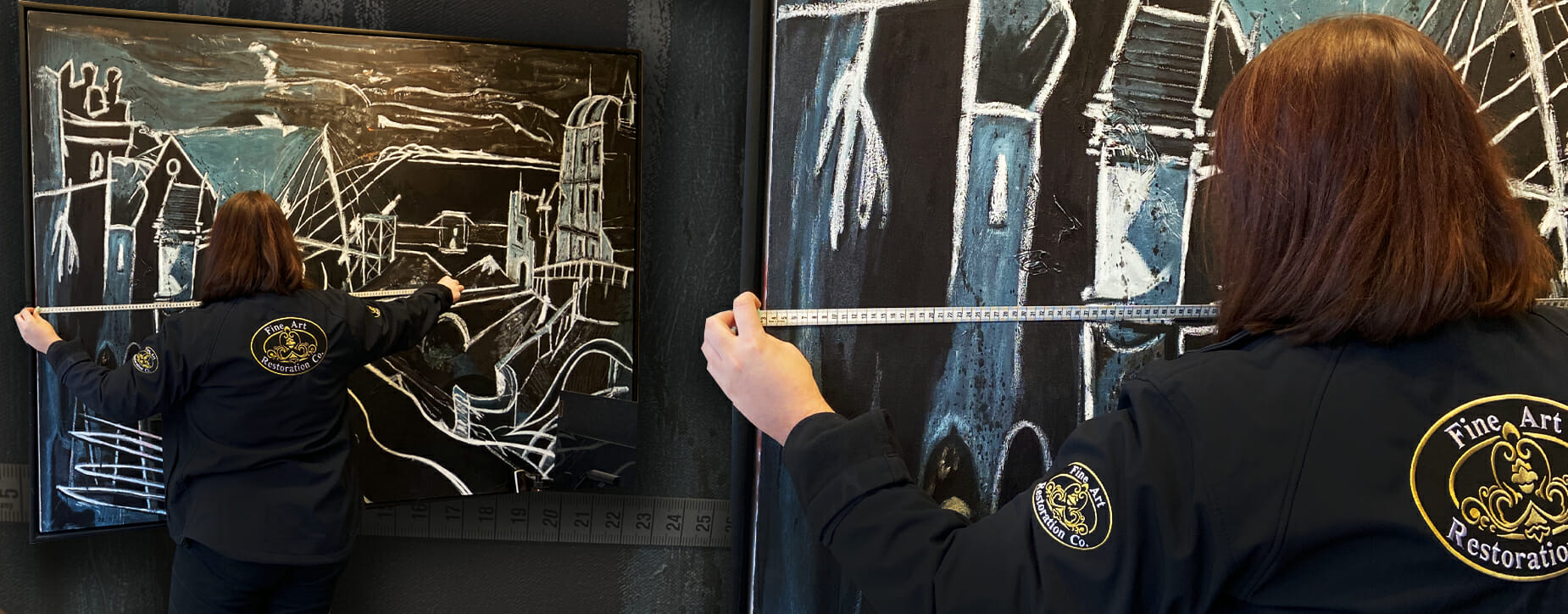 Above: a member of our team measuring a large artwork in our London studio
Above: a member of our team measuring a large artwork in our London studio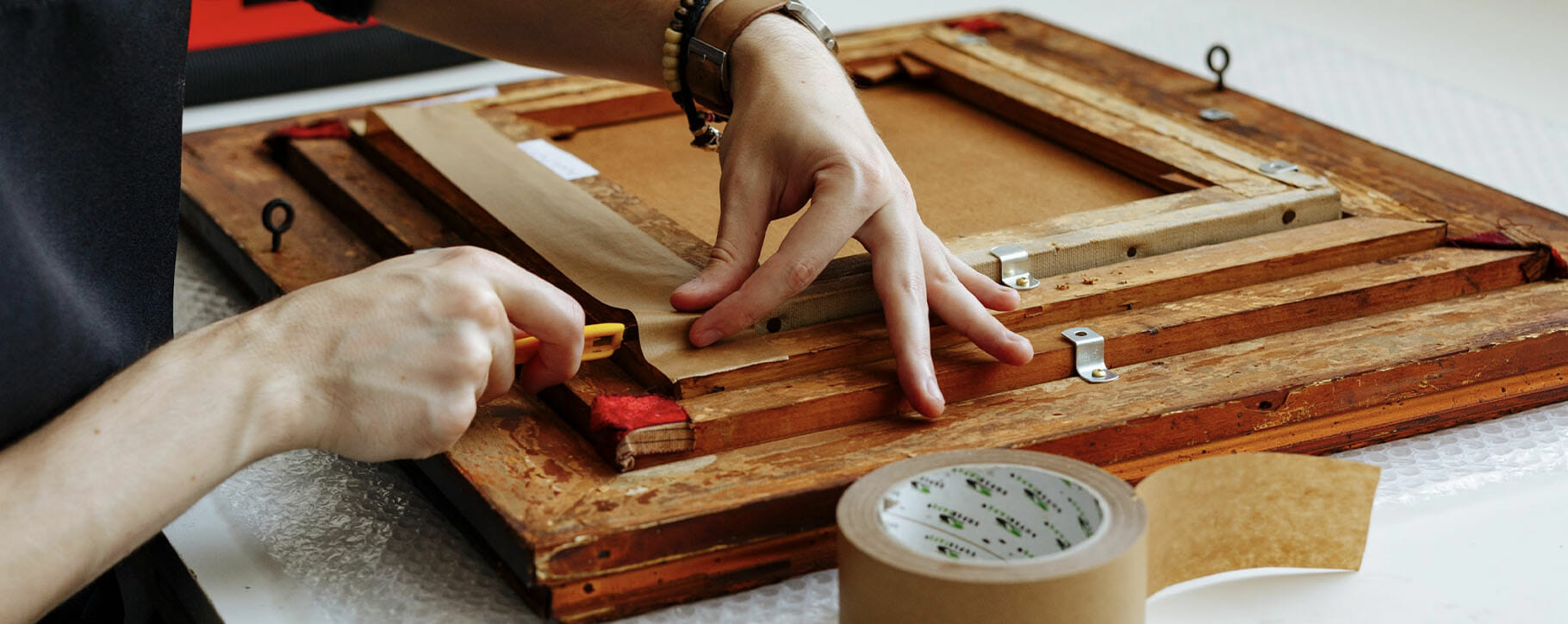 Above: our frame conservator attaching new fixtures to an antique frame
Above: our frame conservator attaching new fixtures to an antique frame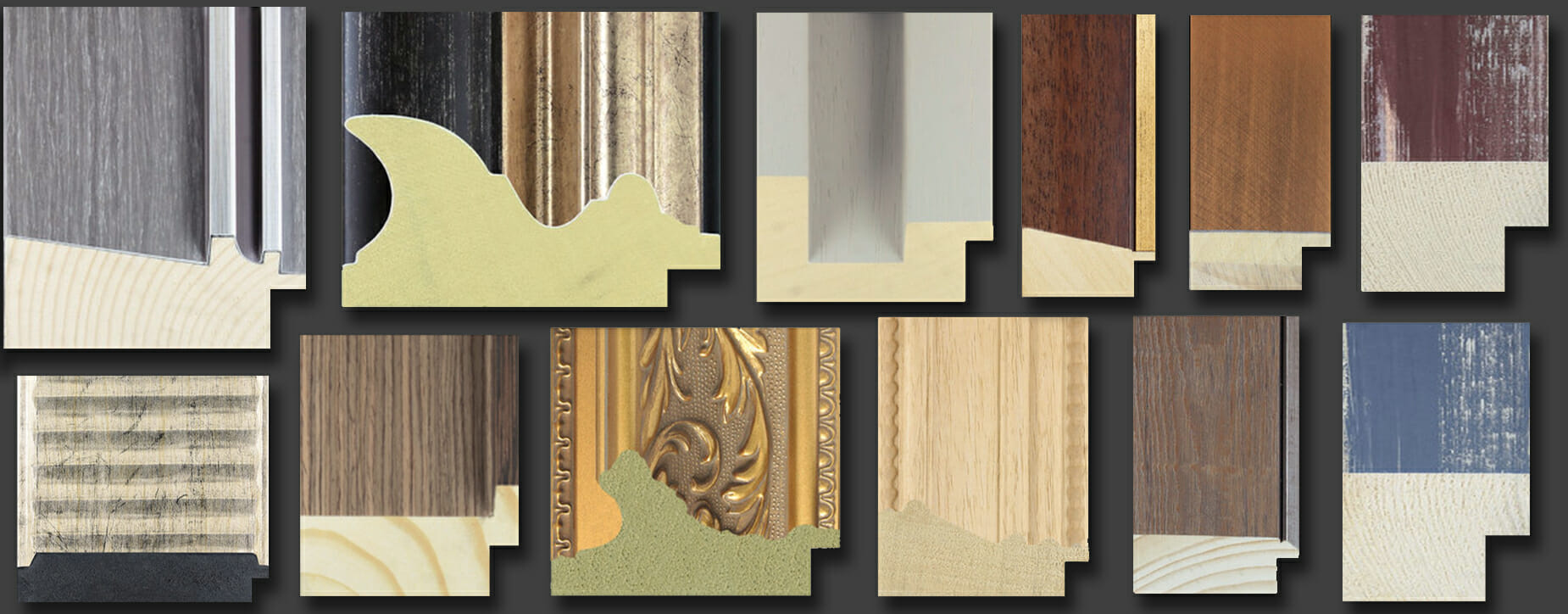 Above: a selection of new frames in different styles with wood and polcore materials
Above: a selection of new frames in different styles with wood and polcore materials Above: a large New York cityscape framed with an aluminium moulding
Above: a large New York cityscape framed with an aluminium moulding 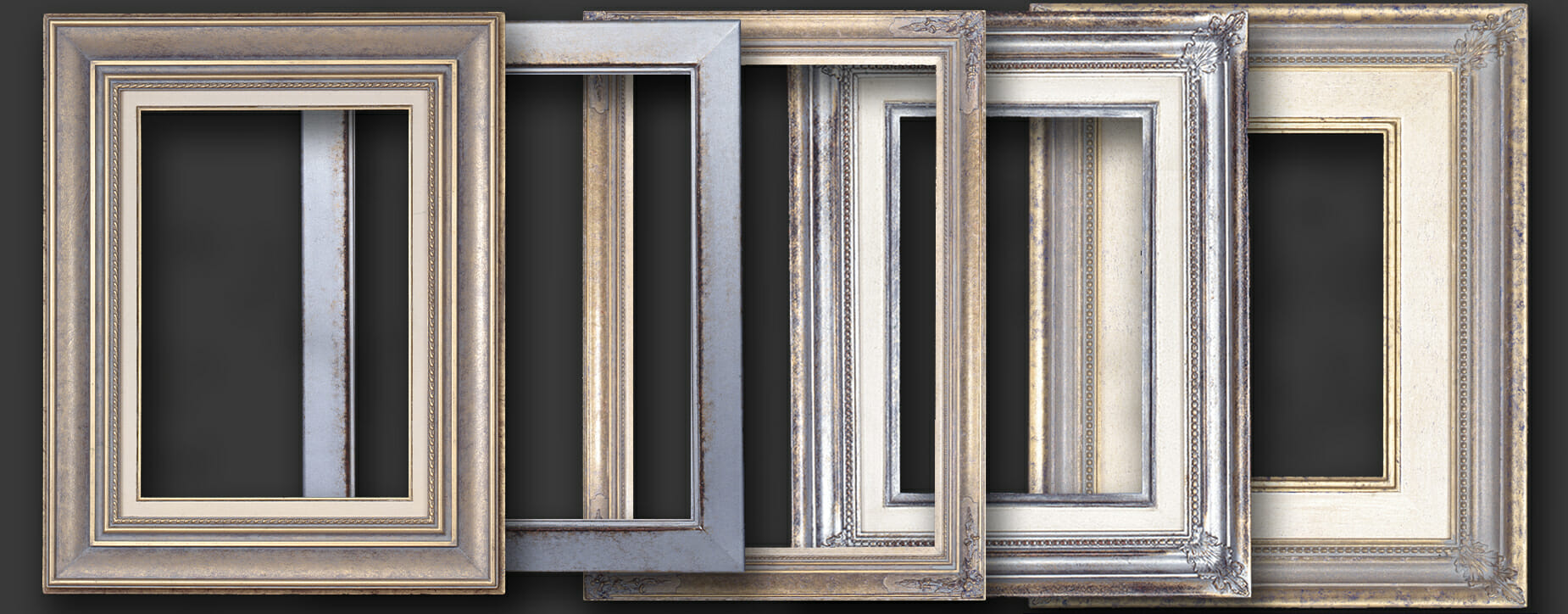 Above: examples of various frames which are available from our technicians
Above: examples of various frames which are available from our technicians 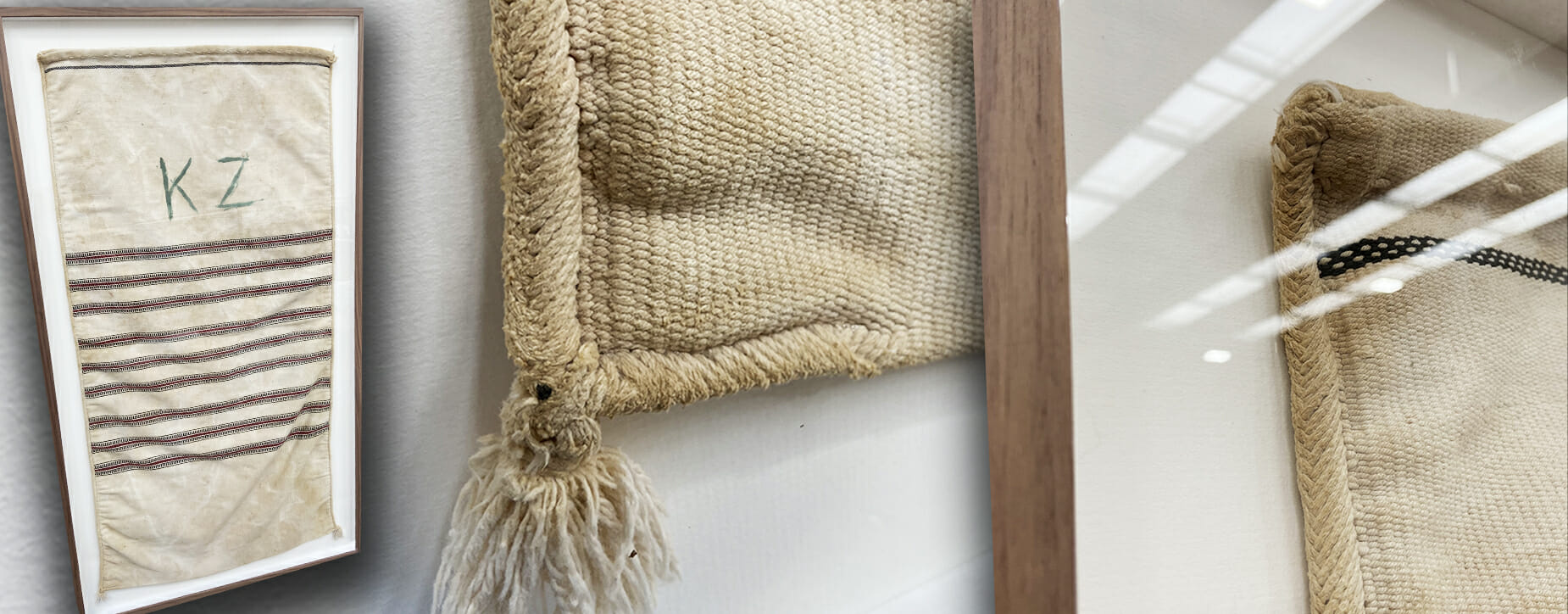 Above: an important family heirloom textile mounted by our technicians using specialist conservation techniques and glazing to reduce fading
Above: an important family heirloom textile mounted by our technicians using specialist conservation techniques and glazing to reduce fading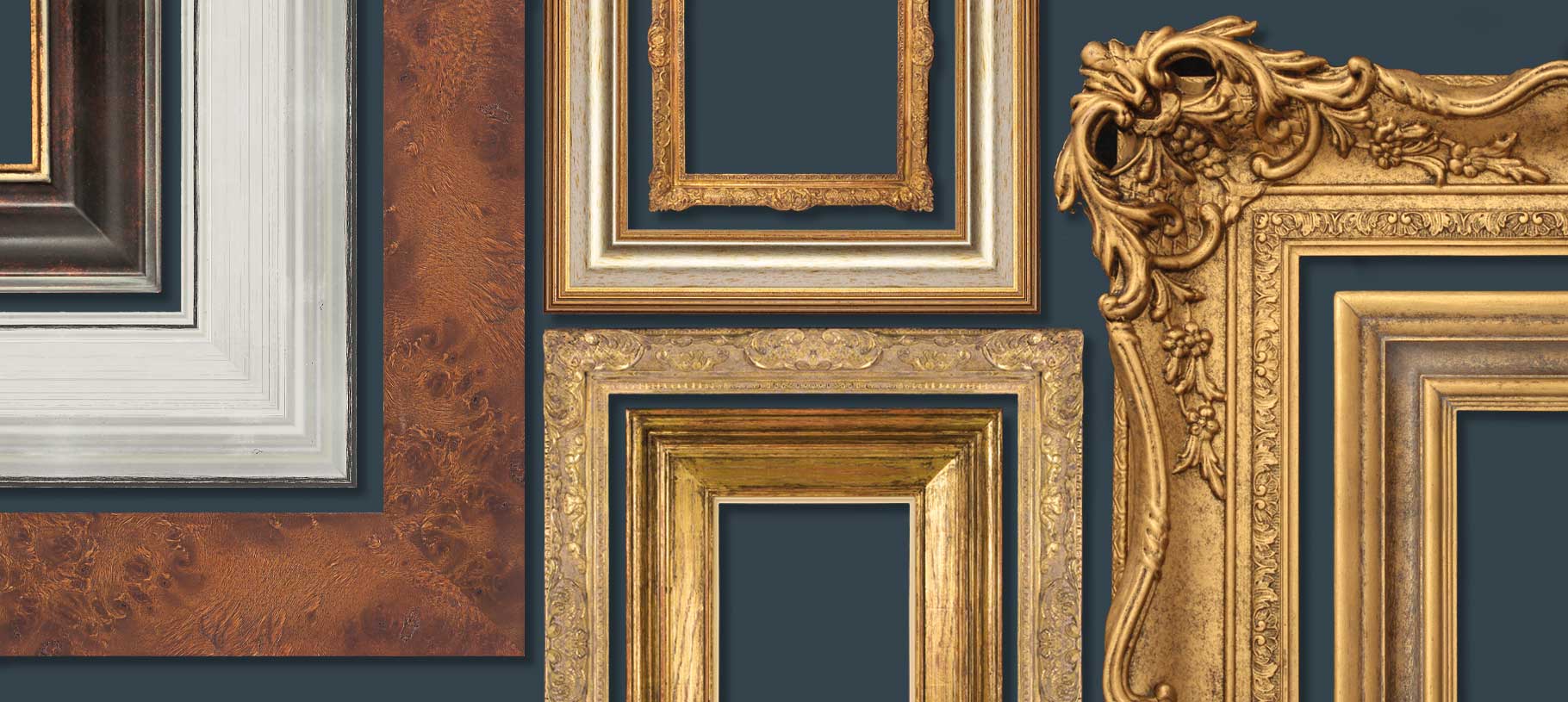 Above: a wide range of frames can be made available, from antique baroque finishes to modern and minimalistic styles
Above: a wide range of frames can be made available, from antique baroque finishes to modern and minimalistic styles  Above: a selection of mounts used on paper artworks which have visited our studio
Above: a selection of mounts used on paper artworks which have visited our studio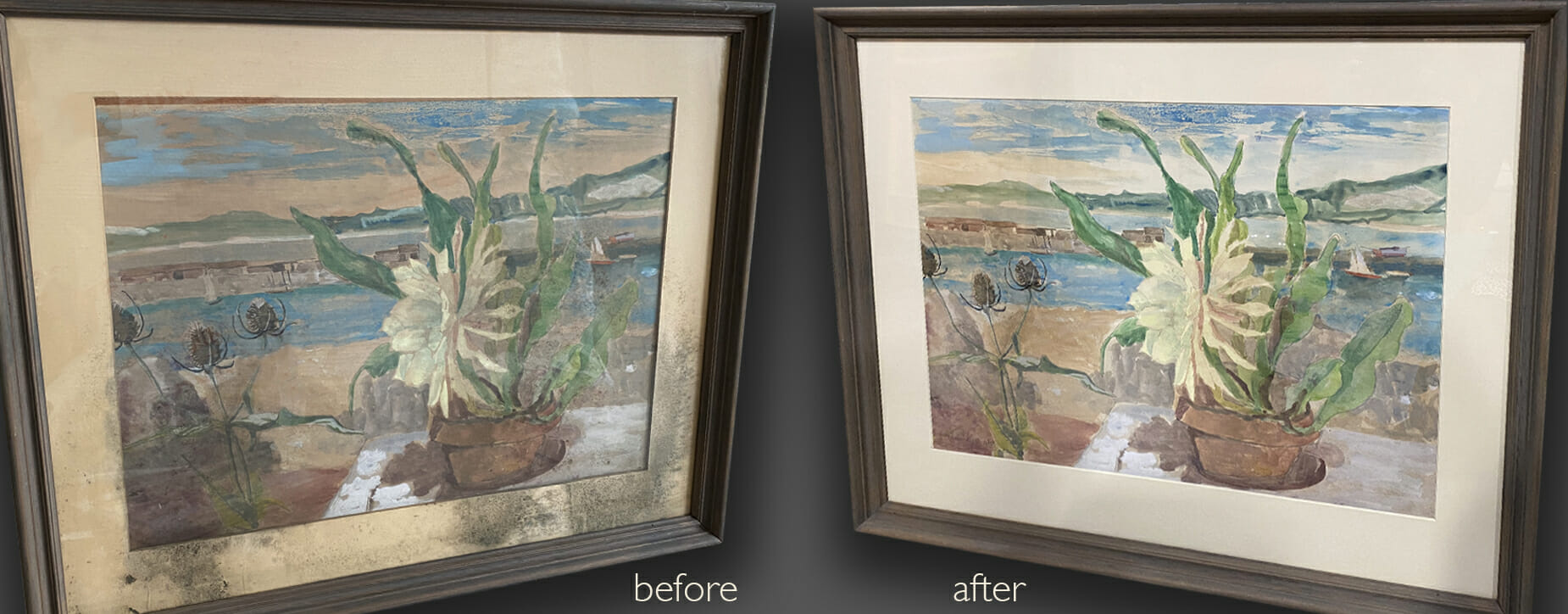 Above: a painting and mount which has been affected by mould growth – before and after restoration by our team
Above: a painting and mount which has been affected by mould growth – before and after restoration by our team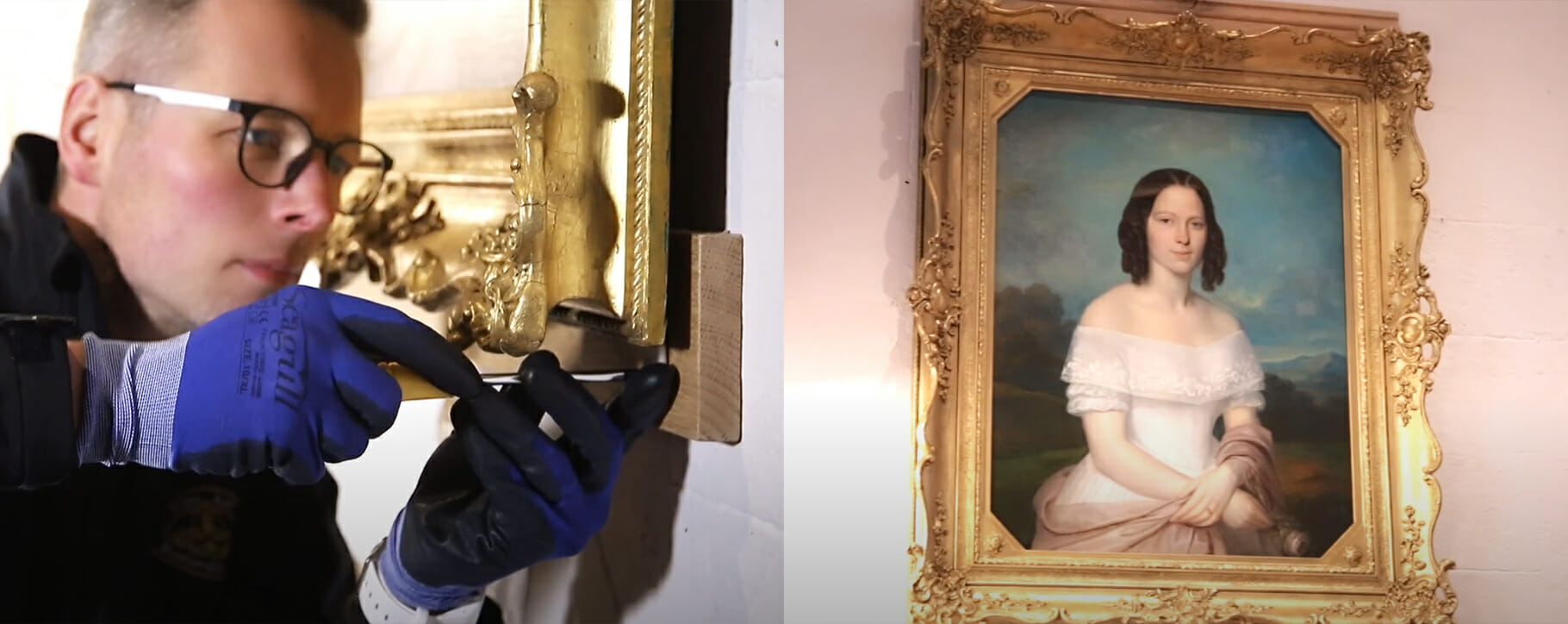 Above: this portrait with a large and heavy frame was attached to bespoke brackets in order to not disturb historic brickwork and add further stability
Above: this portrait with a large and heavy frame was attached to bespoke brackets in order to not disturb historic brickwork and add further stability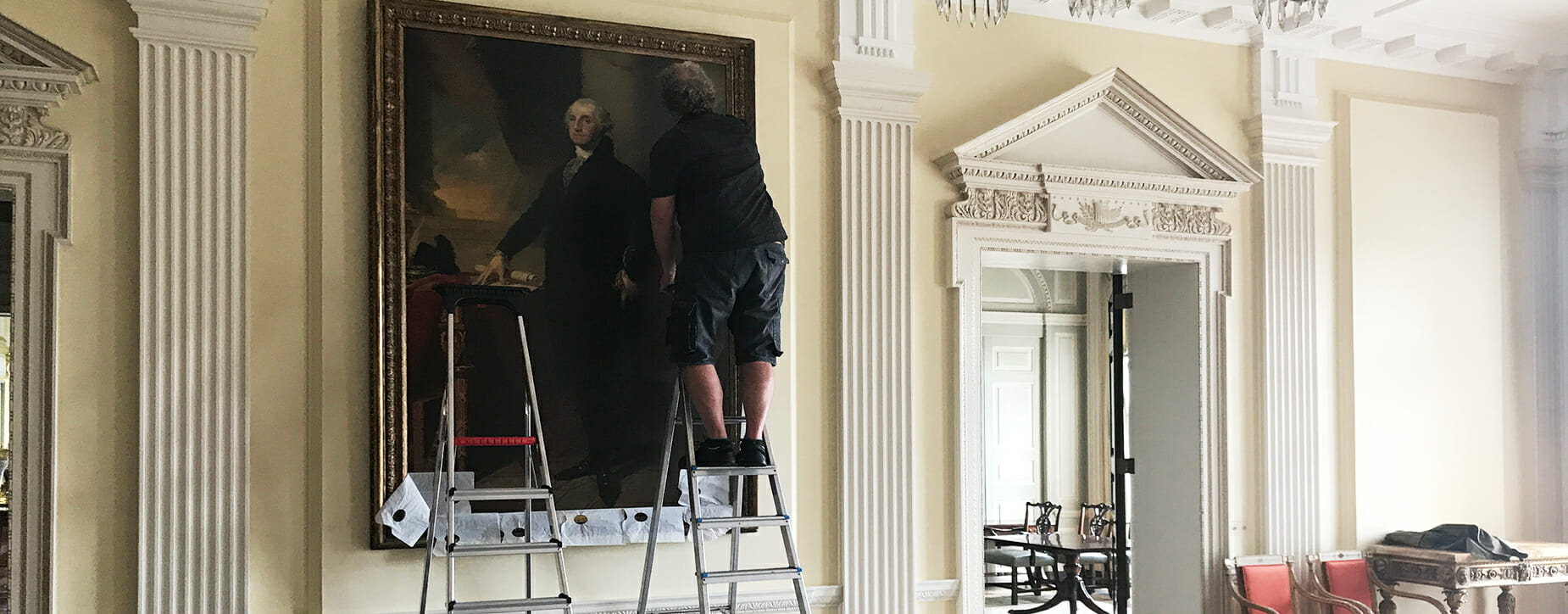 Above: our conservator cleaning a painting onsite so that a secure and fixed frame installation does not have to be moved from position
Above: our conservator cleaning a painting onsite so that a secure and fixed frame installation does not have to be moved from position 




